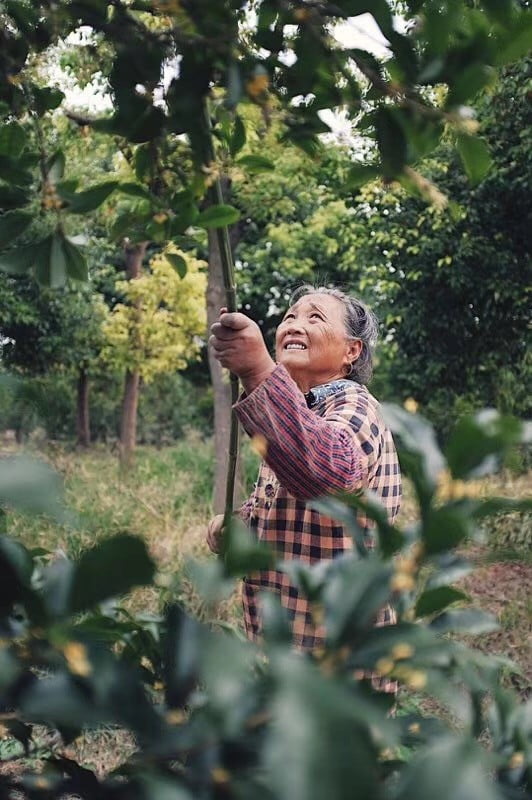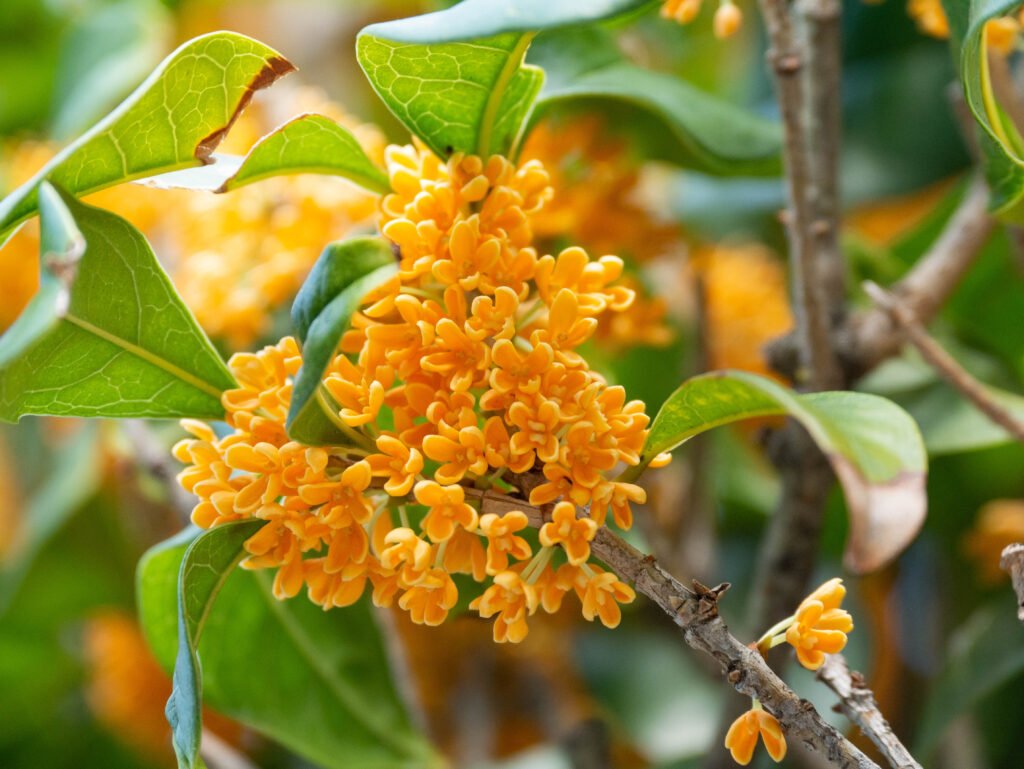To offer you the most pure and elegant quality of osmanthus gold absolute, we make sure that the concrete matchs our standards and then we transform the concrete into absolute ourself in our facilies in Spain.

From flowers to absolute
As our historical quality of osmanthus comes from Anhui, Guangxi and Hubei provinces in China, our new osmanthus gold quality is exclusivelly grown in the Anhui province.
The trees bloom from September to mid-November. The blooming period is short, lasting only 5 to 10 days. The flowers are manually harvested by beating the trees’ branches to cause the flowers to fall onto jute cloths. The blooms, which fade very quickly, are kept in brine for two to three months.
After salted process, the aroma is stronger and more stable with notes of ripe fruit and sweet flowers. Before the extraction into concrete, flowers are washed with water to remove salts and impurities. Then comes the extraction. During this process, if the temperature is too low, the absolute content is high but the yield is low and the fragrance weak because some amount of the molecules are undissolved. If the temperature is too high, the yield is also high but the absolute content is low and so the notes are weak as well and not characteristic.
The storage has an important influence on the quality of final osmanthus concrete too. The first three months correspond to the aging process which make the fragrance stronger. Then, fruit notes ease and tea notes thrives. After a little more time, riped fruit aroma becomes stronger with slight sour.
Before any transformation of the concrete, we make sure of its quality by controlling appearance, odour, colour, composition and impurities like phthalates by GC-MS analysis.
Osmanthus gold absolute uses
From a luxurious and elegant yellow flower, the Osmanthus gold absolute will add a natural sensual touch to your formulas, with its peach and apricot notes on a delicate leather base.
It is a component in reconstitutions of yellow fruits, tobaccos, or syrupy accords to give them a fruity and floral touch. Its smoky and leathery facet can also complement certain leather accords.
About Osmanthus
Sweet osmanthus, originally from Asia’s eastern Himalayas, has been grown for more than 2,500 years in China and was commonly planted in the imperial palace gardens in the Forbidden City in Beijing. Today, Osmanthus fragrans grows mainly in Guangxi province.
In China, Osmanthus fragrans represent luck and happiness. The trees are mainly intended for sale and sightseeing. The flowers are traditionally used to make Osmanthus wine, Osmanthus sugar or tea. Osmanthus absolute began to penetrate the world of perfumery in 1972 when it was used by Jean Kerléo in the fragrance 1000 by Jean Patou.
